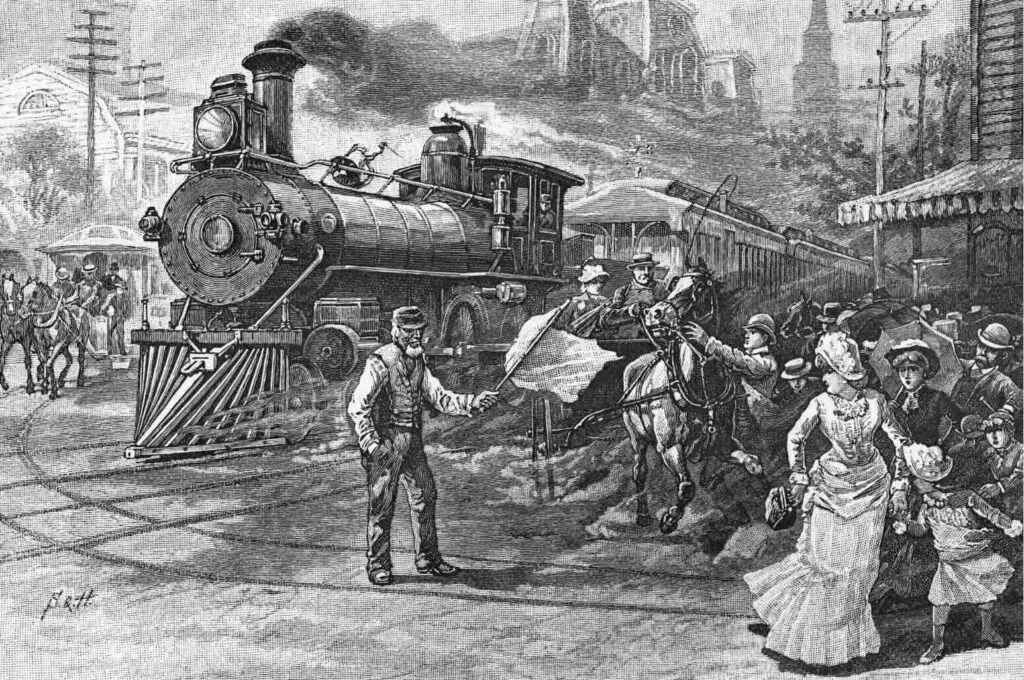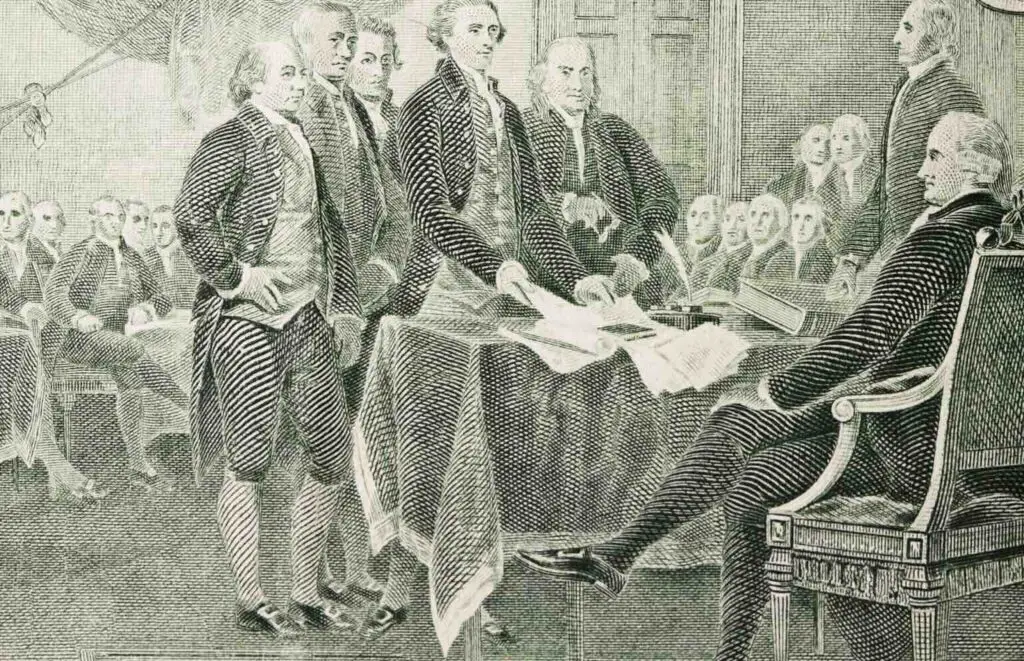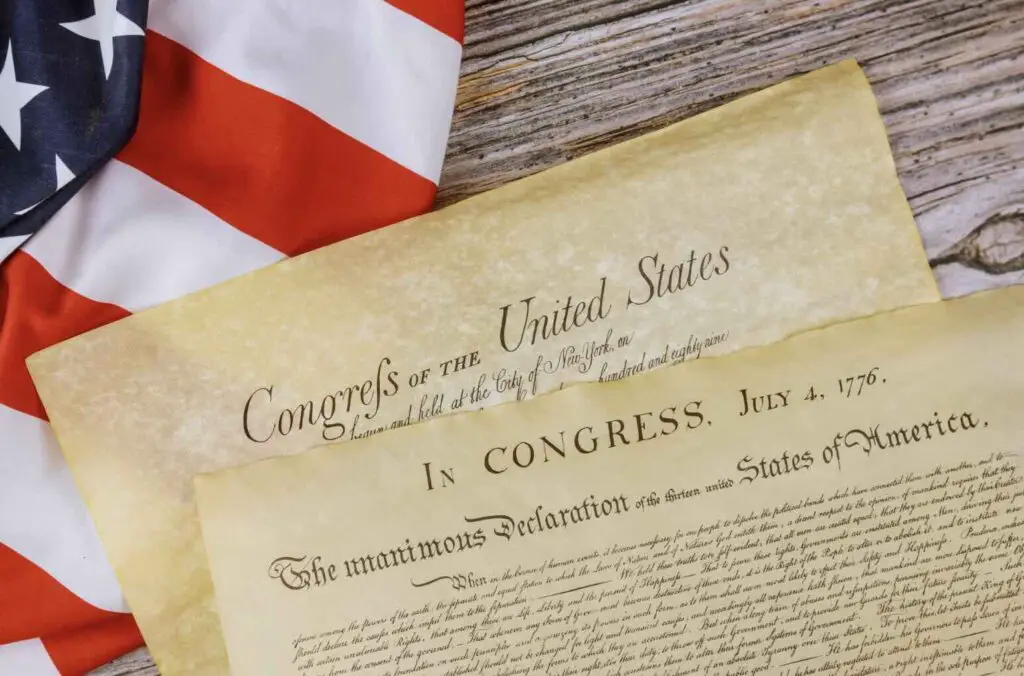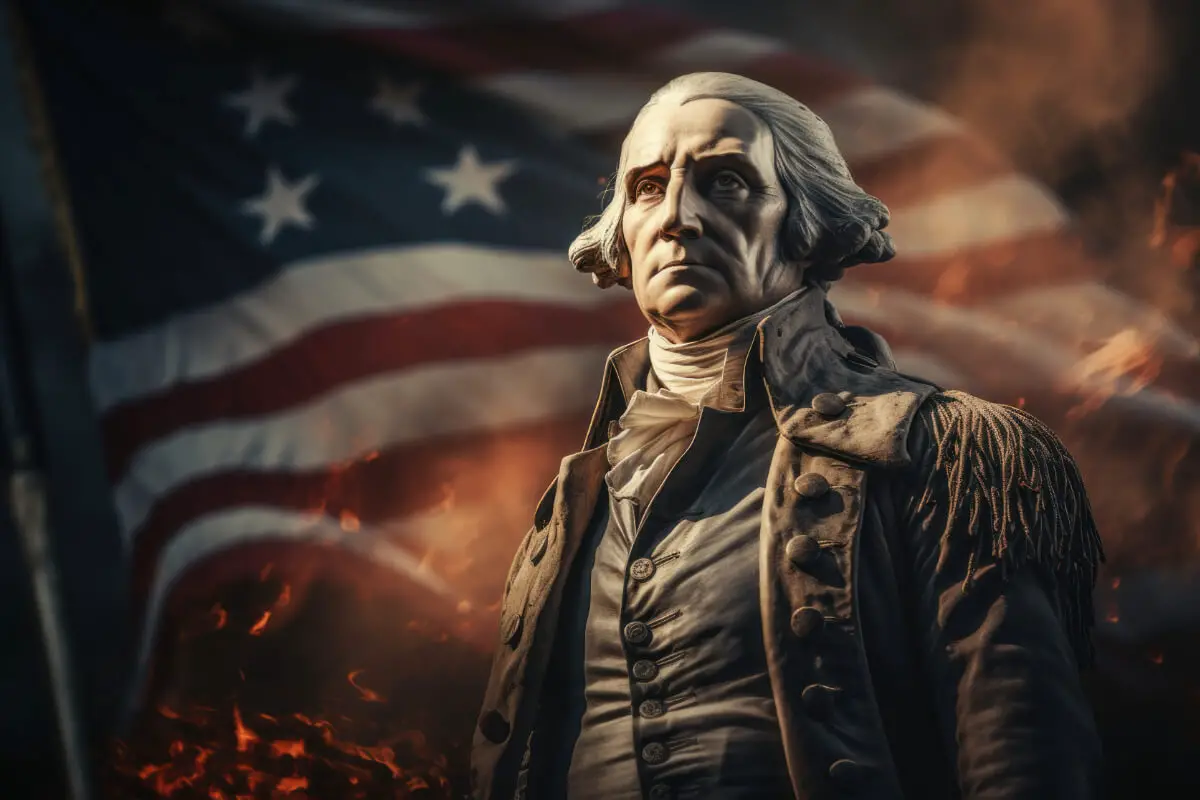The fabric of America is woven with the threads of history, shaped by the hands of its Founding Fathers, contested through the fires of the Civil War, and continuously redefined in the struggle for civil rights.
This story unfolds through their actions, decisions, and the pivotal moments that have shaped the nation into what it is today. As we explore these eras, we uncover not just the events that occurred but the profound impacts they have had on the identity of the United States and its people.
Table of Contents
- The Founding Fathers and Their Complexities
- The Civil War and Reconstruction
- The Civil Rights Movement
- Related Questions
The Founding Fathers and Their Complexities
In the fabric of America’s creation, the portraits of its Founding Fathers stand as iconic symbols of independence, vision, and the birth of a nation. Yet, beyond the historical facade, who were these individuals in their daily lives? Peeling back the layers of history, we discover real people, not just the stoic faces from our currency and textbooks.
George Washington, revered as the first President of the United States, often comes to mind with his dignified pose and powdered wig. However, Washington was more than a revolutionary leader; he was a farmer who loved his Mount Vernon estate. He was also an innovator, experimenting with crop rotation and animal husbandry, and even indulged in creating his recipes for beer. His leadership style was tempered by personal loss and warfare trials, shaping a man who valued restraint, discipline, and the emerging American ethos.
Benjamin Franklin, known for his wit and wisdom, was a polymath. A printer by trade, Franklin’s curiosity drove him to realms of inventing, with creations like the lightning rod and the bifocal glasses. His diplomatic skills were unmatched and key in securing French aid during the Revolutionary War. Yet, Franklin’s life was anything but conventional; his letters reveal a man of complex relationships and a sharp, sometimes biting, sense of humor.
Thomas Jefferson, the principal author of the Declaration of Independence, was also a man of profound contradictions. Jefferson’s Monticello estate reveals his passion for architecture and innovation. His vast library indicated a mind never at ease, always seeking knowledge. However, Jefferson’s legacy is also intertwined with the darker narrative of slavery—an owner of slaves, his personal and political life embodied the complex moral struggles of his time.
Alexander Hamilton, celebrated as a financial genius, was an immigrant who embodied the American Dream. Rising from obscurity, his intellect and ambition placed him at the forefront of America’s foundational moment. Hamilton’s life was a whirlwind of controversy, marked by passionate political rivalries and a scandalous personal life. His tragic end in a duel with Aaron Burr adds a dramatic coda to his life story, underscoring the tumultuous nature of the era.
John Adams, another key figure, offers the archetype of the American intellectual and statesman. Adams’ dedication to American independence was unwavering, yet his partnership with his wife, Abigail, provided the emotional bedrock of his life. Their extensive correspondence reveals a relationship of mutual respect and affection, rare for its time and integral to Adams’ personal and political achievements.
These men, among others, crafted the blueprint of a new nation driven by ideals of freedom and justice. Yet, their personal lives—filled with loves, losses, contradictions, and complexities—remind us that history is not just a series of events but a tapestry woven from the lives of natural, flawed, and deeply human individuals.
As we explore the lives of America’s Founding Fathers, we see not just the architects of a country but men who loved, struggled, and dreamed. Their legacy, built on the foundation of their humanity, continues to shape the destiny of the United States, reminding us that greatness often emerges from the crucible of individual lives.

The Civil War and Reconstruction
The Civil War and Reconstruction eras stand as transformative periods in American history, etching a profound and indelible mark on the nation’s tapestry. This era not only redefined the structural fabric of America but also reshaped the collective consciousness of its people concerning concepts of freedom, equality, and governance. This pivotal phase reveals the profound shifts and enduring legacies it has bestowed upon the United States.
The Civil War: A Nation Divided
At the heart of the Civil War lay a fundamental discord over slavery and state rights, a schism that tore at the very soul of the nation. As states in the southern part of America seceded to form the Confederate States of America, the country was embroiled in a fierce battle over its future direction. From 1861 to 1865, the war was not merely a military conflict but a moral crusade to redefine the essence of American liberty and democracy.
The emancipation of enslaved African Americans was a cornerstone of this transformation. President Abraham Lincoln’s Emancipation Proclamation in 1863 signaled a shift in the war’s moral and political objectives, casting the struggle as not only a fight to preserve the Union but also as a campaign against the institution of slavery. Although limited in its immediate practical implications, this gesture foreshadowed the profound societal changes on the horizon.
The Civil War’s toll was monumental, with casualties surpassing those of any other war in American history. Yet, in its wake, the Union emerged victorious, and the integrity of the United States was preserved. The war’s end, however, was just the beginning of a complex process of rebuilding and redefining the nation.
Reconstruction: Rebuilding the Foundation
The period known as Reconstruction, spanning from 1865 to 1877, was an ambitious attempt by the federal government to rebuild the South and integrate formerly enslaved individuals into the fabric of American society. This era saw the passage of pivotal amendments to the U.S. Constitution – the Thirteenth, Fourteenth, and Fifteenth Amendments – which abolished slavery, guaranteed equal protection under the laws, and secured voting rights for black men, respectively.
However, the Reconstruction era was marked by significant challenges, including fierce resistance from many in the South. The introduction of Black Codes, aimed at restricting the freedoms of African Americans, and the rise of white supremacist groups underscored the enduring prejudices and societal divisions. Despite these obstacles, Reconstruction witnessed the first African American senators and representatives, albeit briefly, signal a remarkable, though nascent, reimagining of American democracy.
A Legacy of Progress and Division
The Civil War and Reconstruction redefined America in fundamental ways. They concluded the chapter on chattel slavery, reshaped the nation’s political landscape, and set the stage for the civil rights struggles that would continue to define American discourse. The amendments ratified during Reconstruction embedded the ideals of freedom and equality more deeply into the Constitution, laying a foundation for future legal and social progress.
Yet, the end of Reconstruction also marked the beginning of a prolonged period of racial segregation and disenfranchisement in the South, epitomized by the Jim Crow laws. The aspirations for a fully inclusive democracy were deferred, and the divisions sown by the Civil War would continue to reverberate through American society.
The Civil War and Reconstruction eras were crucibles of change, forging a new identity for a nation grappling with its contradictions. It was a time of profound suffering, immense courage, significant advances, and missed opportunities. This period redefined what it means to be American, highlighting the enduring struggle to align the nation’s reality with its founding ideals of liberty and justice for all.

The Civil Rights Movement
The Civil Rights Movement was a pivotal era that reshaped American society. It aimed to dismantle racial segregation and discrimination against African Americans. This movement, which lasted from the 1950s to the 1960s, united a diverse coalition of individuals by the vision of equality and justice.
Central to its success were the strategic nonviolent protests and civil disobedience. Leaders like Martin Luther King Jr. advocated for peaceful methods, drawing from Mahatma Gandhi’s teachings. This approach garnered national attention, especially when peaceful protestors met with violence from segregation supporters. Images and stories of these confrontations broadcasted through television and newspapers evoked public sympathy and international condemnation, pressuring the government to act.
Another key driver was the grassroots organizing at the local level. Organizations such as the Southern Christian Leadership Conference (SCLC) and the Student Nonviolent Coordinating Committee (SNCC) played critical roles. They mobilized communities, registered African American voters, and organized sit-ins and freedom rides. This community-based approach empowered individuals and built a strong foundation for the movement.
The role of litigation and legal victories cannot be overstated. Thurgood Marshall and the NAACP Legal Defense and Educational Fund strategically challenged segregation through the courts, leading to landmark rulings like Brown v. Board of Education in 1954, which declared state laws establishing separate public schools for black and white students unconstitutional. Such victories provided the legal framework for further desegregation efforts.
Additionally, the support from various sectors of society, including white allies, religious groups, and labor unions, broadened the movement’s base. This diverse backing helped to push civil rights issues into the mainstream, making it a national concern rather than just an African American one.
The Civil Rights Movement’s success also hinged on the leadership’s ability to seize the political moment. The Cold War context made the US more sensitive to issues of race and democracy, as racial discrimination was a vulnerability that the Soviet Union eagerly exploited in its propaganda. Aware of this, civil rights leaders adeptly linked the fight for racial equality with the broader struggle for democracy, appealing to American ideals and international reputation.
The legislative achievements—notably the Civil Rights Act of 1964 and the Voting Rights Act of 1965—cemented the movement’s success. These laws dismantled legal segregation and removed barriers to voting, respectively. Their passage resulted from sustained advocacy, including the March on Washington for Jobs and Freedom in 1963, where Dr. King delivered his iconic “I Have a Dream” speech.
The Civil Rights Movement transformed American society through nonviolent protest, grassroots organizing, legal victories, broad-based coalition building, effective leadership, and significant legislative achievements. It marked a turning point in the nation’s history, moving it closer to its foundational ideals of freedom, equality, and justice.

Through the lens of history, we’ve traveled from the drafting rooms of the Founding Fathers across the battlefields of the Civil War to the marches and courtrooms of the Civil Rights Movement. Each period, with its heroes and villains, victories, and defeats, has contributed to the unfolding narrative of America.
It is a narrative that reminds us of our collective strength, resilience, and persistent pursuit of the ideals upon which the nation was built. As we look back, we also look forward, understanding that the fabric of America continues to evolve with each generation, enriched by the lessons of history.
At A Bus On A Dusty Road, we discuss travel, life, and ex-pat living. We are all about “Living Life As A Global Citizen.” We explore social, cultural, and economic issues and travel.
We would love to have you be part of our community. Sign up for our newsletter to keep up-to-date by clicking here. If you have any questions, please contact me, Anita, by clicking here.
Listen to our Podcast called Dusty Roads. You can find it on all major podcast platforms. Try out to listen to one of our podcasts by clicking here.
Subscribe to our A Bus On A Dusty Road YouTube Channel with great videos and information by clicking here.
Related Questions
How Do You Say “Hello” In Hawaiian And How It Is Traditionally Used?
In Hawaii, people will greet you by saying hello or aloha. They may also use the word aloha to say goodbye. Aloha is the traditional greeting in the Hawaiian language for greedy people that are friends, family, or even strangers. But the word aloha means much more than just hello or goodbye; there are many traditional and cultural meanings inside the word.
By clicking here, you can discover How Do You Say “Hello” In Hawaiian And How It Is Traditionally Used?
What Continent Is Hawaii A Part Of, And Why?
Politically, Hawaii is considered part of the North American continent as it is one of the United States of America states. But location-wise, many people consider it part of the Oceana continent as it is located within the area known as Polynesia.
By clicking here, you can discover What Continent Is Hawaii A Part Of And Why?
Are Hawaiians And Samoans The Same Thing?
Hawaiians and Samoans are not the same groups of people; they are very different. Native Hawaiians are considered to be Americans. Most native Hawaiians do not speak the Hawaiian language. On the other hand, Samoans consider themselves from the archipelago of Samoa. Most Samoans speak Samoan and English. Culturally the two places are very different.
By clicking here, you can discover Are Hawaiians And Samoans The Same Thing?

